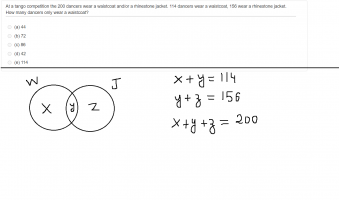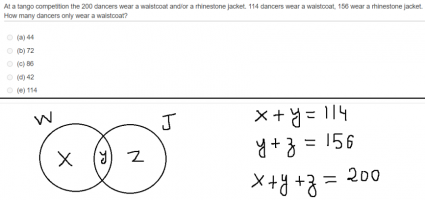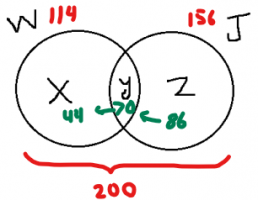Qwertyuiop[]
Junior Member
- Joined
- Jun 1, 2022
- Messages
- 123
Hi, I have two logical questions Q1 and Q2. I was able to solve the first one Q1 using venn diagrams, i got 3 variables that i solved by substitution. I don't remember what the answer was so I didn't include it in the diagram but it was correct. If you had to do it, would you solve it by simultaneous equations too or is there a faster to way to do it? I think I have like 2-3 minute for each of these questions, not sure if creating and solving equations is the best method.
For Q2 , there are 2 teams, Football and Skiing. Some pupils of a class either do one sport only, both or neither. To visualize the given information I made a venn diagram but got totally confused at the 5 options. How do I even make sense of the statements? They all sound wrong to me : P .
For Q2 , there are 2 teams, Football and Skiing. Some pupils of a class either do one sport only, both or neither. To visualize the given information I made a venn diagram but got totally confused at the 5 options. How do I even make sense of the statements? They all sound wrong to me : P .





